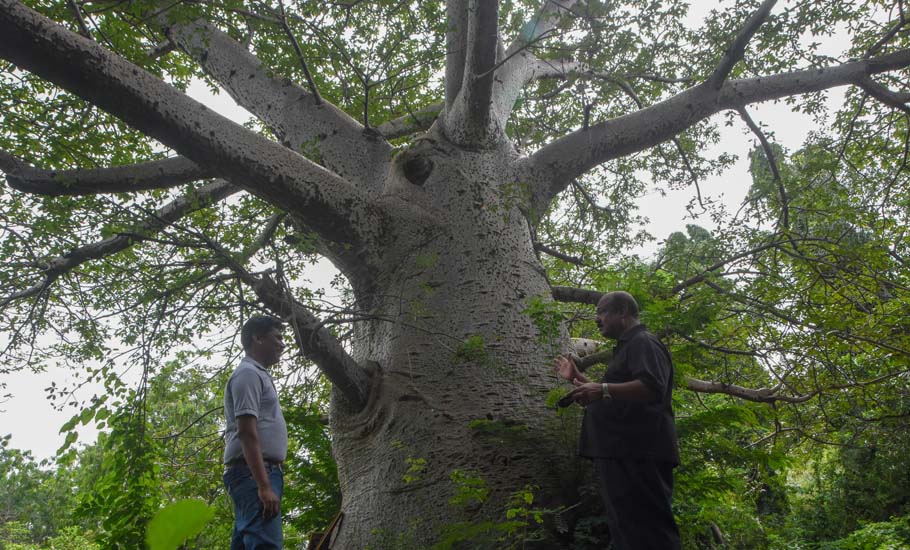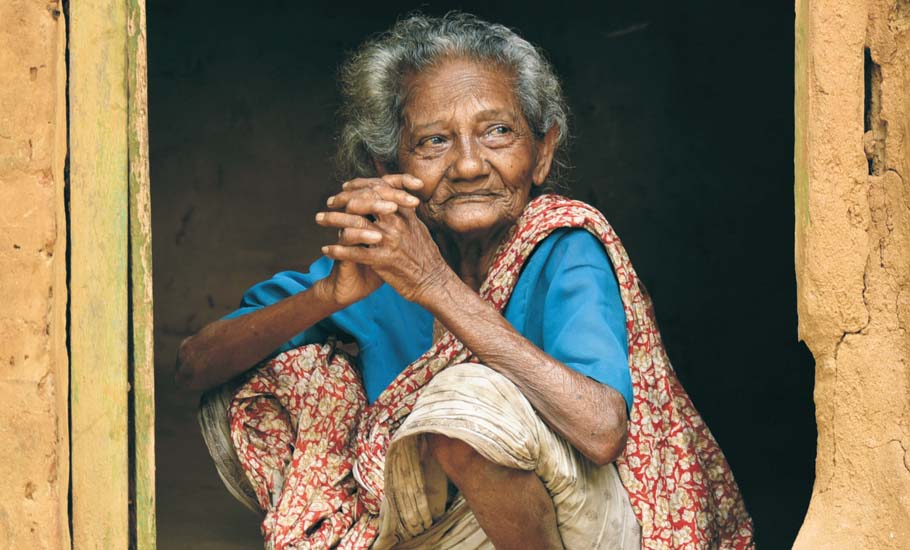
- Home
- India
- World
- Premium
- THE FEDERAL SPECIAL
- Analysis
- States
- Perspective
- Videos
- Sports
- Education
- Entertainment
- Elections
- Features
- Health
- Business
- Series
- In memoriam: Sheikh Mujibur Rahman
- Bishnoi's Men
- NEET TANGLE
- Economy Series
- Earth Day
- Kashmir’s Frozen Turbulence
- India@75
- The legend of Ramjanmabhoomi
- Liberalisation@30
- How to tame a dragon
- Celebrating biodiversity
- Farm Matters
- 50 days of solitude
- Bringing Migrants Home
- Budget 2020
- Jharkhand Votes
- The Federal Investigates
- The Federal Impact
- Vanishing Sand
- Gandhi @ 150
- Andhra Today
- Field report
- Operation Gulmarg
- Pandemic @1 Mn in India
- The Federal Year-End
- The Zero Year
- Science
- Brand studio
- Newsletter
- Elections 2024
- Events
- Home
- IndiaIndia
- World
- Analysis
- StatesStates
- PerspectivePerspective
- VideosVideos
- Sports
- Education
- Entertainment
- ElectionsElections
- Features
- Health
- BusinessBusiness
- Premium
- Loading...
Premium - Events

Rediscovering Tirunelveli: The untold stories flowing along the Tamiraparani

From Somerset Maugham to Veerapandiya Kattabomman, the brown palm civet to the tree skink, and Vedipala to Pandyan Kottai, Tamil Nadu’s Tirunelveli has many big name, place, animal and thing attached to it. However, no one has documented the many facets of the region collectively – a reason why we still depend on History of Tinnevelly, a book written by Bishop R Caldwell in 1881,...
From Somerset Maugham to Veerapandiya Kattabomman, the brown palm civet to the tree skink, and Vedipala to Pandyan Kottai, Tamil Nadu’s Tirunelveli has many big name, place, animal and thing attached to it. However, no one has documented the many facets of the region collectively – a reason why we still depend on History of Tinnevelly, a book written by Bishop R Caldwell in 1881, for everything related to Tirunelveli. This is precisely why a year ago, a group of scholars, nature enthusiasts and photographers decided to find a solution to the issue. The result was Trails of Tamiraparani, a coffee-table book, which captures the myriad hues of the landscape, the travails of the past, its glorious heritage and prosperity.
Published by the Ashoka Trust for Research in Ecology and the Environment (ATREE), the 300-page book has four chapters — ‘Ainthinai’, ‘Panpadu’, ‘Varalaru’, and ‘Vazhviyal’ — as enshrined in the ancient Sangam literature. While ‘Ainthinai’ (landscapes) captures the five vivid landscapes of Tirunelveli from the mountains to the shores, Panpadu (culture) reminisces the symbols of its past glory. Varalaru (history) offers a glimpse into the transition from Tinnevelly to Tirunelveli and Vazhviyal is a narrative of people, culture and livelihoods.
Along with photographs, the Trails of Tamiraparani is a collaborative effort borne out of individuals with a strong cultural connection to the river and the landscape. The book’s lead editor, District Collector V Vishnu, felt the need for documentation of Tirunelveli in the form of a book when he was working as a Sub-Collector in Cheranmahadevi, a panchayat town, in 2016. But the idea could materialise only when he discussed the matter with environmentalists such as M Mathivanan a year ago, when he assumed the charge of collector in Tirunelveli.
“Even though the region has produced many writers, artists and historians, there was no proper documentation of Tirunelveli, barring a couple of works by the British writers. There are some research works but they were not meant for the common readers. So, it was necessary for us to make something that provides an overall view of Tirunelveli,” says Vishnu.

Mathivanan soon prepared a list of people who could contribute to the documentation project. A meeting was held in November 2020 in which more than 40 people from various fields participated. “We decided to crowdsource the materials for the book. So, people from different fields were called for a meeting. We also realised that it was not possible for one person to write a book like this, so we needed more people to do the job. And that’s how it all began,” says Vishnu.
Even though Tirunelveli is gifted with natural wealth in abundance, it is infamous for caste-related violence. So the team thought of something which could bring people from various castes under one umbrella. They soon found an answer: Tamiraparani, the only perennial river in Tamil Nadu which originates in the Pothigai hills. The river evokes an emotion that blurs the distance between people, culture and history. Meandering its way through the lush green paddy fields of Ambasamudram to the marshy Punnakayal near Thoothukudi where the river meets the Bay of Bengal, thousands of untold stories flow along the Tamiraparani. “Tamiraparani provides a great source of energy to the people here. So, we thought we would use the river as a common subject, from where we would travel to various facets of Tirunelveli,” he says.
Since most contributors were fluent in Tamil, the information that they collected had to be translated into English. At the same time, the core team, which is composed of M Soubadra Devy, Vinod M Kumar, P Maria Antony besides Vishnu and Mathivanan, worked on editing and fact-checking. The team walked along the Tamiraparani and then trekked to the Kalakad-Mundanthurai wildlife sanctuary, to shoot rare species of birds and animals. “We wanted to include as many fresh photographs as we could. We have taken only 40% photographs from the archives, the remaining 60% are new. We are happy that we could include many rare pictures in the book, most of them shot exclusively for this project,” says Mathivanan, coordinator of the project.
The Kalakad Mundanthurai Tiger Reserve (KMTR) is nestled in the Agasthyamalai mountains along the western boundary of Tirunelveli with the conical Agastya peak, situated about 1,868 metres (6,129 feet) from the sea level, as a landmark on its western horizon. The reserve is a biodiversity hotspot and a home to many endangered and unique plants and animal species. The Agasthyamalai range is also known to be the cradle of “siddha”, a herbal-based health practice. The tribal community, Kani, of the region believes that Agasthya Muni (sage) still roams these hills collecting plants to prepare healing potions.
The KMTR is a treasure of plants comprising more than 2,000 flowering species, of which, at least 150 are found nowhere else. Many plants have been named after specific locations within the tiger reserve. Plants such as the Syzygium Calcadensis, Eugenia Singampattiana and Dalbergia Tinnevelliensis are some of the examples. British naturalists Robert Wight and RH Beddome had explored this region extensively. Botanist JS Gamble’s Flora of the Presidency of Madras talks about a number of species from the KMTR. The reserve has many waterfalls and Banatheertham is one among them. Famous artist brothers Thomas and William Daniell had trekked the region during 1786 and 1794, capturing the beauty of these falls in their paintings. The book has included some of the paintings.

The Sengaltheri forest rest house where the famous English writer Somerset Maugham once stayed is still well maintained. “In The Razor’s Edge, Maugham describes the transcendental experience at the sight of the morning sun touching Netterikal reservoir. Even today, staying in the rest house atop Sengaltheri is considered a premium experience by many tourists,” note the authors.
In the wet forest, you will find Vedipala (Cullenia Exarillata), a tree with a huge buttressed trunk and flaky bark. Endemic (found nowhere else) to the wet forests in the southern part of Western Ghats, this tree has usual flowers that are whorled in clusters on the woody branches of the tree.
Apart from tigers, KMTR supports a variety of other fauna. The forest has five primate species. Besides the lion-tailed macaque and the Nilgiri langur, it is also home to some of the very elusive small mammals like the brown palm civet, Nilgiri striped squirrel, jungle striped squirrel, Nilgiri marten, brown mongoose and the Malabar spiny dormouse.
“Endemic to India, Johnsingh’s tree skink is exclusive to these forests. It was discovered in 1985 by the renowned naturalist AJT Johnsingh from Tirunelveli,” the book says.
The grassy slopes of Kuthiraivetti can be reached by road from Manimutharu. It is a great view point. The Mundanthurai plateau above Papanasam, according to the authors, is ‘the jungle’ that has been a favourite hunting site for the erstwhile Pandya kings and officials of the British Raj. The ruined Pandyan Kottai has an Oothu or a spring inside. It is believed that the fort was guarded by the king’s sepoys through a 108-relay drumming system for conveying the sighting of enemy troops.
The book talks not only about wildlife and ecology, but also about temples, people and their livelihood. “Pandya and Vijayanagara kings built many temples dedicated to Lord Shiva along the banks of Tamiraparani and its tributaries. Vaishnavite Nayak rulers also added many Vishnu temples to the region. The Cheranmahadevi Bhaktavatsala Perumal temple was built by the Pandyas in the 12th century AD,” they write.

A chapter on poligars is intriguing. Among the many uprisings against the British, Poolithevan, who lived at Nerkkattum Seval from 1715-1767, was one of the earliest among the poligars to challenge British rule.
Kattabomman, another poligar, of the 18th century belonged to a clan of people who migrated to the south when the Vijayanargara empire fell. “The battle of Kattabomman, along with a few other poligars, resisting British sovereignty in 1799, is believed by some historians as the first organised uprising against the British in India, much before the Indian Rebellion of 1857,” find the authors.
At least 70 scholars, experts, photographers and nature enthusiasts contributed to the book, which was released in Chennai recently. “We are happy that we could bring out the book despite the pandemic-necessitated restrictions,” says Mathivanan, who is also a senior research associate at ATREE and coordinates the Agasthyamalai Community Conservation Centre, Manimutharu.
The coffee table book format, he adds, is mainly to catch the attention of the new generation and kindle their interest to conserve nature, culture and livelihoods of this very unique landscape.
